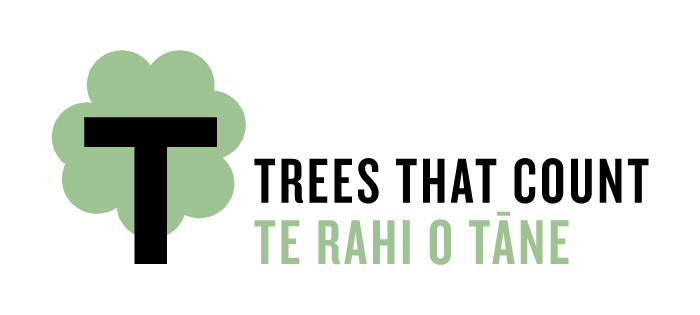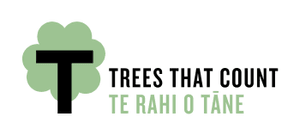More than 500,000 native trees have been planted through the Trees That Count programme, funded by New Zealanders and the local business community.
Here comes Christmas, and with it the season’s usual tsunami of plastic garbage: trinkets bought, exchanged, discarded. Wasted.
But how else is one expected to navigate the gift-giving season? Simply refuse to recognise the spirit of the holiday? Ban gifting itself? Say bah humbug to the whole thing?
There’s no need to take such extreme measures.
Just plant a tree, bro. For 10 bucks and two minutes of your time, you can fund a real live native tree that will get thoughtfully planted in the perfect spot (by somebody else!) somewhere around New Zealand that needs it.
That’s the big idea behind Trees That Count, New Zealand’s marketplace for connecting people who want to donate trees to people who want to plant them.
Managed by the Project Crimson Trust, formed 30 years ago to save the pōhutukawa from extinction, the Trees That Count programme is designed to help New Zealanders plant 200 million native trees over the next 10 years, and to tally the number of native trees that are planted in New Zealand: 32,353,528 and counting since 2016, with over 530,000 trees gifted or donated through the Trees That Count marketplace.
This Christmas supporting native reforestation has never been easier. It’s literally the gift that will keep on giving.
A typical full grown tree can absorb around 21 kilograms of carbon dioxide per year. So, of those 32,000,000+ trees counted so far, Trees That Count estimates a potential removal of between 5,400,000 and 7,400,000 tonnes of carbon dioxide from our atmosphere over the next 50 years.
And it’s not just about fresher air. The environmental benefits of trees are myriad. Not only do trees absorb carbon dioxide as they grow, they also provide habitat, food and shelter for a range of species, while reducing ambient temperatures and the rate of soil erosion.
Native trees are particularly good at this, says Adele Fitzpatrick, CEO of Project Crimson and team leader of Trees That Count. Pine and many other exotics grow very quickly, but what they don’t do is last a long time. They don’t have as strong root structure as natives either, and they aren’t as resistant to the effects of climate change.
“A native forest will also have great diversity within it,” explains Fitzpatrick, “which means it’s very resistant to fire, the soil is healthier, it’s a healthier forest for bird life, and it has its own kind of micro climate. Plus it’s great for our mental health. There’s a very strong wellbeing aspect to native forests.”
Tackling erosion at Turihaua Station
Trees That Count currently receives donations from New Zealanders of all shapes and sizes – both individuals and SMEs, as well as significant support from corporate Aotearoa – and matches that funding to worthy planting projects around the country.
A marketplace manager is responsible for approving projects and then pairing them with native trees from specific funders. The system allows donors to be matched to projects with specific environmental outcomes. For individuals, the manager can match their trees to a particular region for planting. Donors are always notified which project their trees have been matched to, and can follow the project’s progress on the planter’s profile page on the Trees That Count website.
Trees That Count has so far supported more than 560 such planting projects, including the planting currently underway at Turihaua Station in Gisborne, where Paul and Sarah Williams (zoologist and environmental scientist-farmers, respectively) are using natives – some funded by corporate donations and matched to the farm by Trees That Count – to restore the waterway that runs through the farm.
The stream flows into Turihaua Bay, a popular beach used by everyone from campers to recreational and commercial crayfishers. The Gisborne area in general is very prone to erosion, making the quality of water flowing into the bay an issue of concern.
“Gisborne has soft mudstone soils,” says Sarah Williams, “so we’ve been really focused on our impact on the receiving environment and how we can improve the health of the stream.”
The farm has embarked on a project to plant the three kilometre length of the river with natives from Trees That Count, in an effort to hinder the erosion of the stream bank, help filter the farm’s run-off into the river and ensure the waterway remains hospitable for fish. The focus is not so much on capturing nutrients – as would be the case with more intensive farming operations – although capturing sediment bound phosphorus in runoff is a benefit.
To stabilise the banks, a mix of tree species that can withstand floods are being planted, as well as larger species further away from the stream. Those larger plants will, in the long term, provide a forest canopy and much-needed shading of the stream.
“We have carried out a baseline freshwater biodiversity study in the stream which was found to be lacking,” says Williams. “Long term we hope the tree shade will lower the stream temperatures and less sediment will smother the rocky bottom, improving habitat for fish and macroinvertebrates.”
“Another biodiversity benefit is that the trees will also provide a corridor for birds to travel between bush blocks.”
The stream restoration project forms just one part of a larger environmental project underway at the farm, which includes introducing pest control, fencing of bush blocks, regenerative farming practices and widespread planting of natives species to encourage biodiversity.
“We’ve planted a range of species sourced by our local Makaraka Native Garden Nursery from our farm’s East Coast pūriri forest,” says Williams. “There’s a scattering of manuka and kānuka throughout the planting – they establish quickly and can provide shading for the other trees to get established – and we’ve got a lot of favourites like kahikatea, rimu, totara, pūriri and kōwhai.”
Restoring the waterway fits in nicely with the couple’s holistic approach to farming the land, Williams says. “As custodians of the land we want to make sure we are constantly improving it for the benefit of our three boys like our parents and the generations before us.”
Big business comes to the tree-planting party
Currently, Trees That Count is highly reliant on corporate funding, and Fitzpatrick says the organisation provides plenty of tangible benefits in return. “We’re a great partner for businesses – from environmental, cultural and community perspectives,” she says.
“Every tree funded is a tree in the ground and we can show where the tree is planted and its carbon value over time. And there’s not much that’s prettier than a native tree in bloom with tui jumping around in it.”
That’s been an attractive enough proposition to win over Mazda NZ, which has so far funded a whopping 50,000 trees for 137 planting projects across Aotearoa since 2018.
“A couple of years ago we were fed up with sending out Christmas gifts,” explains David Hodge, managing director at Mazda NZ. “We just thought ‘this is wrong, we should be doing something good for the environment’.”
So, instead of sending out 25,000 gift bags, Mazda planted 25,000 native trees in their customers’ names. Then they did it again the next year. And they’re doing it again this Christmas.
And the company is about to get even more serious about putting New Zealand native species in the ground.
“Going forward, instead of sending out one tree per customer, we’re going to fund four trees for every vehicle sold,” says Hodge. “We might sell 10,000 cars per year, so that will eventually get us up to around 40,000 trees per annum.”
“Trees That Count is all about native trees and permanent forests and I love the idea of all this ending up as a living, breathing, regenerating forest. It’s not just pine trees that are going to get ripped out after 25 years.”
“For us it’s the right thing to do and it’s doing good things for the environment.”
It’s a good start, but it’s just the beginning for Trees That Count. “We want to see 200 million planted across the country,” says Fitzpatrick, “and have the data to prove it.”
In the immediate term, the group is looking to increase both its financial backing and the speed at which trees are being put in the ground.
“It’s time to increase funding and activity and move at scale and pace if we really want to make a difference,” says Fitzpatrick. “And when I say ‘we’, I mean we all need to get engaged.”
She says the organisation is now looking even further ahead, to the long-term benefits of native planting beyond sequestering carbon. To that end, they are currently developing a system of credits that more fully recognises the benefits that native tree planting can bring, such as water quality improvement, increased wildlife numbers and erosion prevention.
“All of these other aspects have a monetary value,” says Fitzpatrick, “so we want to create a credit that recognises that.”
Christmas is coming, dear reader: fund a tree.
Same goes for you, businesspeople: fund several.


